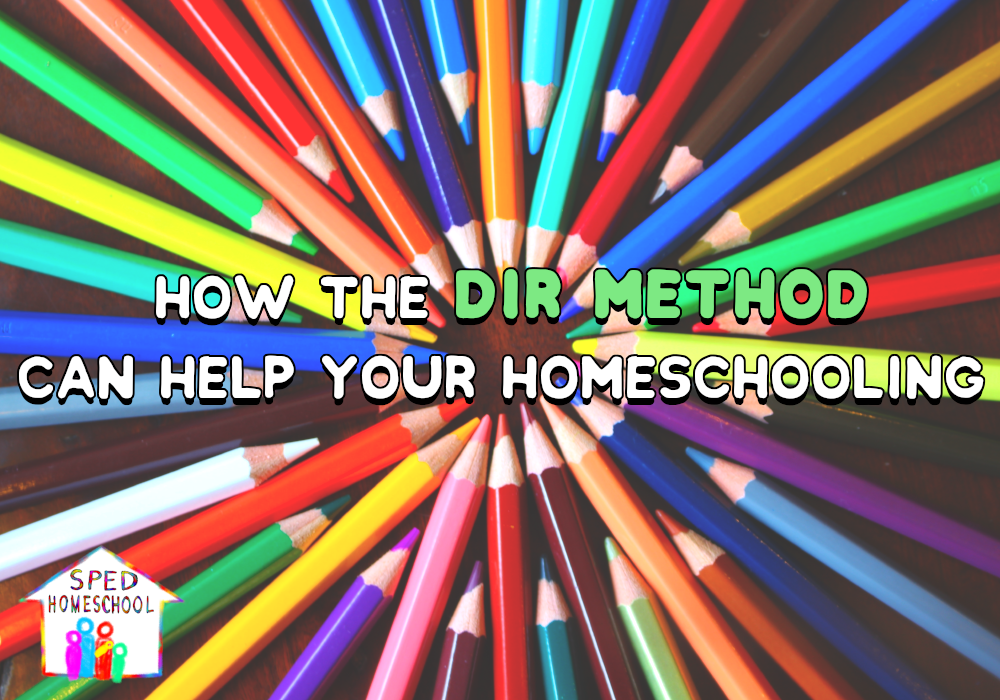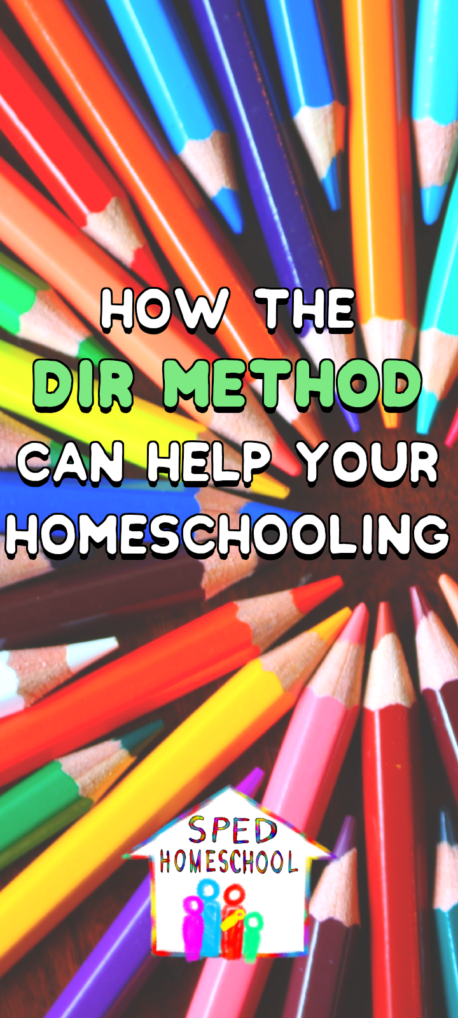
By Mary Winfield
Dr. Stanley Greenspan developed The Developmental, Individual Difference, Relationship-Based Model (DIR Method) in 1979. Dr. Greenspan’s work was a response to the growing need to help children with autism (or other special needs) to learn and develop both academically and socially.
The DIR Method helps parents and educators to determine goals and map out the best way of reaching those goals through structured interactions. While this method was originally developed for children with learning struggles, I think it is helpful for all students.
What I love about DIR is that it is not a bulk, one-size fits all solution to a problem, but rather an intensive look at a specific person with individual needs, wants, and interests. Instead of just treating symptoms of a problem, it builds a solid foundation for healthy development.
Below I am going to take you through the individual parts of DIR to help provide a more in-depth understanding of this teaching model.
“D” stands for Developmental
This model starts with the premise that a student must make incremental steps in development. You can’t take a nonverbal child and set their next goal at having problem-solving communication with a peer. That is unrealistic. You should assess where they fall developmentally and what the next natural step is in their progression. Not knowing the developmental steps often leads to skipping important developments that act as building blocks for future goals. Skipping these necessary incremental steps only sets all involved for unnecessary frustration.
“I” stands for Individual Difference
Each child has their own quirks and interests that make them unique. Because of that, there is no one solution to fix a problem. There are as many solutions as there are children. Helping children engage in learning means taking into account their interests and dislikes. When you approach learning from an interesting standpoint, they will grasp onto it and dive right in instead of having to be dragged along behind you. We learn so much better when we care about what we are learning. We have all seen that gleam in a child’s eye when something grabs their attention, and that is where we should strive to place our teaching.
“R” stands for Relationship-Based
Have you ever heard that saying, “They don’t care how much you know until they know how much you care.”? We don’t have to be taught this principle as children, it is pre-programmed in! Children can tell if they are an item on a checklist. They know when someone cares about them and when someone is just trying to cross something off their list. When we take the time to develop personal relationships with our children in areas other than schooling, we are able to approach learning from a position of love and equal respect. When they know our teaching is flexible enough to allow for bad days or to push it back to deal with a personal crisis, then they will feel loved and thus be better able to learn.
The DIR Method Applied
When I was working in the public school system, I worked one-on-one with a rambunctious kindergartener who I will call Steve. It was a huge struggle. He had a hard time sitting still which meant we took a lot of breaks to burn off energy before returning to his classroom. He had a hard time focusing on anything because his mind wanted to move as fast as his body. He acted out by running away, throwing things, and yelling loudly when we tried to do work. I was exhausted from trying to keep up with him.
Normally during recess, the one-on-one aides would take a break along the sides of the playground (since that was the only time we could other than a short lunch) while the kids ran around. One day I decided to play with Steve during recess instead of sitting down for a few minutes. We pretended we were pirates and were being chased by crocodiles while we searched for hidden treasure. After coming in from recess, I braced myself for another hard afternoon. We sat at the table and as we started to do our work, I continued to call him “Captain Steve” when I gave him instructions or guidance. He sat and focused for longer than I have ever seen him work!
As I continued to work with him, I continued feeding this relationship with him during recesses. I also started incorporating his interests (like counting buried treasure for math, etc.) into his learning. At the end-of-year IEP meeting, everyone was astonished at the progress he had made. People had written him off (I was not his first aide that year, he had gone through several before it was my turn), but all he really needed was someone to care about him and his interests. In receiving those two simple things, he suddenly had all he needed to blossom.
A Method to Nourish Change
Learning and teaching are always going to be hard work, but it is possible to make progress. I like to think of The DIR Method as a tree. The developmental and academic goals we have for our children are like the fruits of a tree. They are our end goal. But we cannot reach those goals without a few other things first. We need a solid trunk of interests and talents that work with those goals to hold them up high and support their learning. And, we also need deep and nourishing relationship roots to feed the whole tree and keep it safe and secure.
There is a lot more to DIR than just these small suggestions, but implementing them can make a huge difference no matter how much or little homeschooling you have left ahead. There are a lot of resources to learn more about The DIR Method, but https://profectum.org/about/dir/ is a good place to start if you are interested in finding out more about this method and its implementation.

